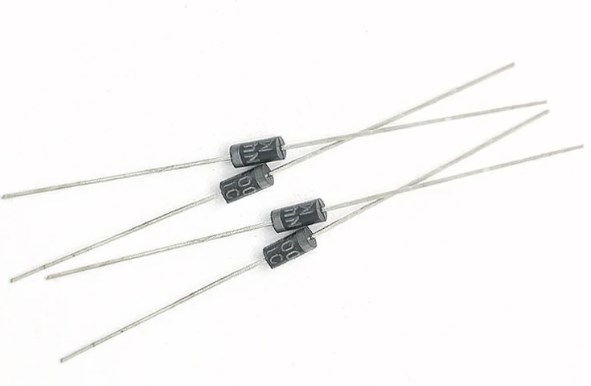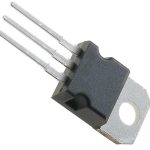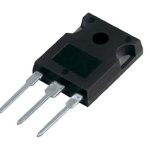The 1N4007 diode is a commonly used component in electronic circuits that allows current to flow in one direction while blocking it in the opposite direction. This diode is widely utilized in rectifier circuits, power supplies, and other applications where reliable and efficient current conversion is essential.
The Significance of Diodes and Their Roles in Electronic Circuits
Diodes play a crucial role in electronic circuits by allowing the flow of electric current in one direction while blocking it in the opposite direction. This property makes them essential components for rectification, signal modulation, voltage regulation, and protection against reverse polarity. Without diodes, many electronic devices and systems would not function properly.
Among the various types of diodes available, the 1N4007 diode stands out as a commonly used and versatile component!
Understanding the 1N4007

The 1N4007 diode is a widely used rectifier diode that is part of the 1N400x series of diodes. Its primary purpose is to convert alternating current (AC) into direct current (DC) by allowing the flow of current in only one direction. This diode is capable of handling high voltage and current levels, making it suitable for a wide range of applications. Whether it’s used in power supplies, battery chargers, or voltage regulators, the 1N4007 diode ensures efficient and reliable conversion of AC to DC.
1N4007 specifications and characteristics
- The diode has a maximum repetitive peak reverse voltage of 1000V, meaning it can withstand voltages up to this level without breaking down.
- Its average forward rectified current is rated at 1A, indicating the maximum continuous current it can handle under normal operating conditions.
- Furthermore, the diode exhibits a low forward voltage drop, typically around 0.7V, ensuring minimal power loss during rectification.
These specifications make the 1N4007 diode suitable for a wide range of applications where moderate to high power rectification is required.
1N4007 Datasheet
To fully understand the capabilities and limitations of the 1N4007 diode, it is essential to refer to its datasheet. The datasheet provides comprehensive information about the diode’s electrical and physical characteristics, enabling engineers and designers to make informed decisions when incorporating it into their circuits.
The datasheet includes details such as maximum ratings, forward voltage drop, reverse recovery time, and thermal resistance. Each parameter has a significant impact on the diode’s performance and must be considered during circuit design and component selection.
Understanding the key parameters and ratings
By carefully studying the 1N4007 diode datasheet, one can gain insights into its operating limits and conditions.
For example, the maximum forward voltage drop specifies the voltage that appears across the diode when it is conducting current. This parameter is crucial for determining power dissipation and efficiency in rectification circuits. Additionally, the reverse recovery time indicates how quickly the diode can transition from the conducting state to the blocking state when the polarity of the applied voltage changes.
Understanding these parameters and others provided in the datasheet ensures proper utilization of the 1N4007 diode and helps avoid potential issues such as overheating, voltage breakdown, or excessive reverse recovery currents.
1N4007 vs. 1N4001
Both belong to the same 1N400x series of diodes and share some similarities in terms of functionality and purpose. Both diodes are rectifier diodes designed to convert AC to DC by allowing current flow in one direction. However, there are notable differences between the two that can impact circuit performance and applications.
The main difference lies in their voltage ratings. The 1N4007 diode has a higher maximum repetitive peak reverse voltage of 1000V compared to the 1N4001 diode, which has a rating of 50V. This means that the 1N4007 diode can handle higher voltage levels without breaking down, making it suitable for applications that require higher voltage rectification. On the other hand, the 1N4001 diode is better suited for low voltage applications.
Another difference is in their current ratings. The 1N4007 diode has an average forward rectified current rating of 1A, while the 1N4001 diode has a lower rating of 1A or less. This means that the 1N4007 diode can handle higher current levels, making it more suitable for applications where higher power dissipation is expected.
Analysis of the impact on circuit performance and applications
The 1N4007 diode’s higher voltage rating allows it to be used in circuits that require rectification of higher voltages, such as power supplies for electronic devices or industrial equipment. Its higher current rating makes it suitable for applications that involve higher power levels, such as motor control circuits or high-power LED lighting systems.
On the other hand, the 1N4001 diode is better suited for low voltage and low-power applications, such as signal rectification in audio amplifiers or small-scale electronic devices.
Practical Applications and Uses of the 1N4007

The 1N4007 diode finds extensive use in a wide range of circuits and devices due to its versatility and robustness. One common application is in rectification circuits, where it converts AC power from the mains into DC power suitable for electronic devices. It is often used in power supply circuits to provide a steady and reliable source of DC voltage.
Additionally, the 1N4007 diode is utilized in voltage regulation circuits. By combining it with other components, such as capacitors and resistors, the diode can help stabilize and regulate the output voltage, ensuring consistent power delivery to sensitive electronic components.
Another practical application is in protection circuits. The 1N4007 diode can be employed as a reverse polarity protection device, preventing damage to circuits or devices caused by incorrect battery or power supply connections.
Furthermore, the 1N4007 diode is commonly used in automotive electronics, battery chargers, inverters, and many other applications that require efficient rectification and reliable current handling.
Conclusion
1N4007 diode plays a crucial role in electronic circuits, enabling the conversion of alternating current into direct current with efficiency and reliability. Its simple yet effective construction, combined with its favorable characteristics, make it a popular choice among engineers and hobbyists alike. Understanding the workings and properties of this diode opens up a world of possibilities in circuit design and power management.
Whether you are a seasoned professional or a novice in the field of electronics, the 1N4007 diode is a component worth exploring and harnessing for your projects!



